
An integral part of our Eco Tour is showing people the mangrove plants within the North Sound and how they sustain life there within that diverse and delicate ecosystem. There are several types of mangrove plant living in Antigua and Barbuda and as a life form they ares so unique and important that i think i will try to cover a tiny description here on this blog. I am not a marine biologist so this description is based on my life experience and info i have taken from the net.
To me, the most interesting of the mangrove plants is the red mangrove with its long thin roots that reach into the water as if they were long fingers. This
website has a pretty simple but good description of what they look like and how they live.
What i tell people on
my boat is that the red mangrove habitat serves
several key purposes with its roll as a massive nursery being most important. A massive range of aquatic
organisms are sustained within the marine side of the mangrove ecosystem from microscopic fish larvae at the bottom to large predator fish at the top of the food chain. Most of the inshore fishery around our island is sustained at entry level by the mangrove habitat. Many people wouldn't realize that fish that are not typically found in
mangrove systems rely on other fish that wouldn't exist if it were not for mangroves. It is one massive symbiotic system with relationships spanning far and wide with the marine ecosystem as well as far outside the marine side of things. Areas which have lost all of their mangrove systems have had other systems and their wildlife seemingly unrelated fall apart. Another good site which shows the basic relationships and importance of the mangrove system can be
found here.
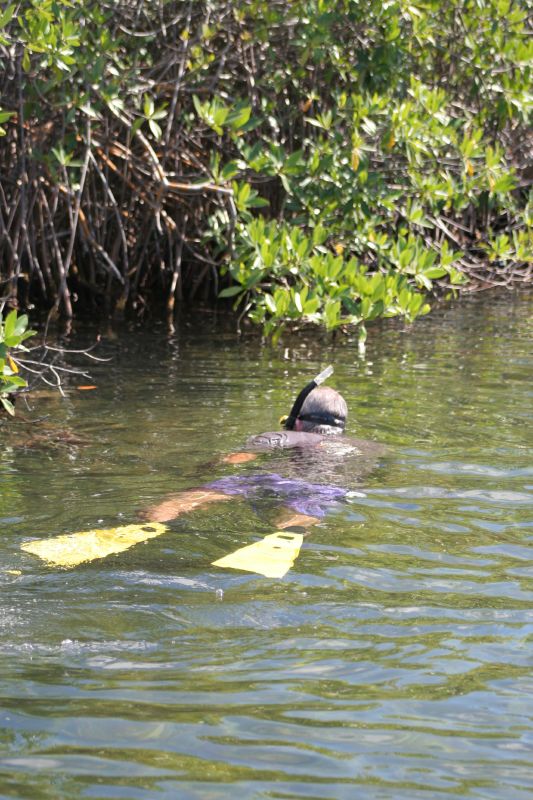
Sometimes the water is so clear in a mangrove habitat that you can see the little fish hiding in and around the roots. These little fish are staying safe and feeding in the protection of the roots only to leave the area once they have matured and gotten big enough to look after themselves. Just this past Carnival weekend my girlfriend and i kayaked along a long section of mangrove as the sun set in Barbuda. We saw spotted eagle rays, snappers, barracuda, southern stingrays, pilchards, conch, sea cucumbers, anemones, oysters, grunts, surgeon fish and many others. This was without going below the surface. It was lovely and made me feel so lucky to just behold the workings and secrets of the mangrove system. Many of these fish were just waiting to change habitat and move to the reefs just outside the lagoon mouth. I am so glad that some parts of our government have decided to start playing an active roll in protecting the mangroves. Its taken some time and there is still so much more work to be done in other areas, but for now there seems to be a general push towards protection and better understanding.
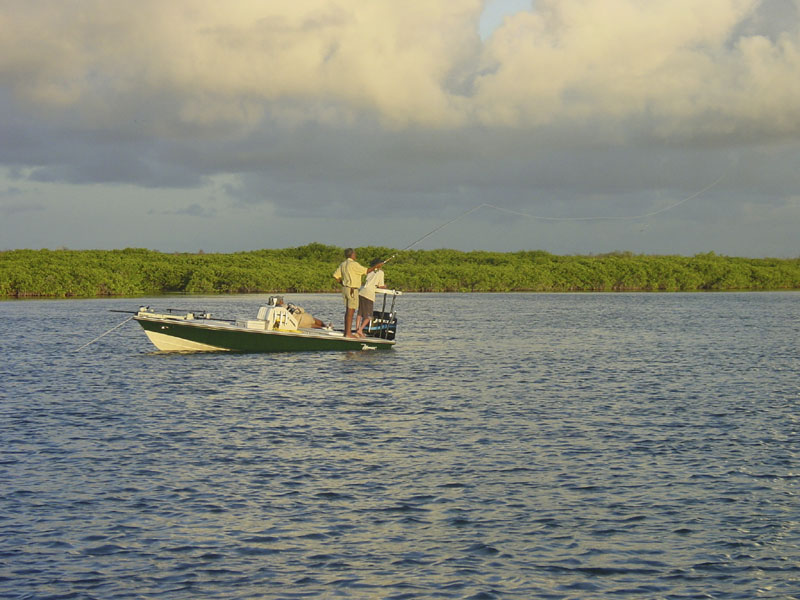
If you are interested in seeing how it all comes together then i suggest going to a bit of the coastline that has mangrove or taking an
eco tour. Its not all great news though and the fight to protect the mangrove
eco system will continue. I hope that the fisheries department will be convinced by the
DCA and Environment division that the use of gill nets in and
around the mangrove system killing the wildlife that is supported there is almost as bad as cutting them down. These photos were taken today:
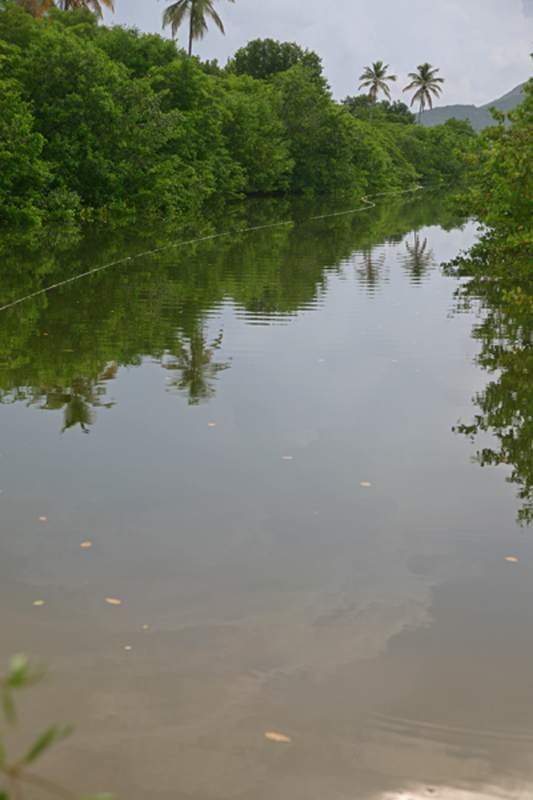
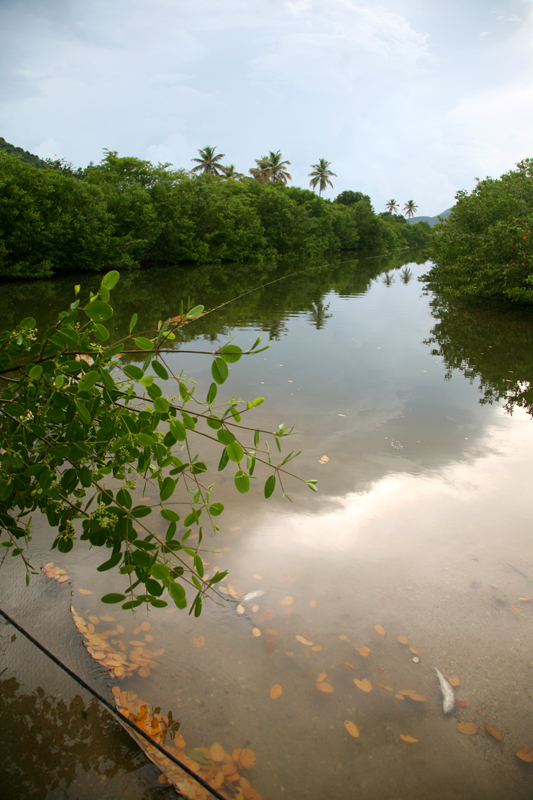
Another importance of the mangrove system is that of a massive filtration system. Sedimentary run off is a hazard which has caused and is causing corals to die all over the world. Corals need sunlight in order to stay alive when sedimentation covers them they die. Mangroves naturally filter sedimentation after rains preventing corals from being killed. When mangroves are removed from a drainage area like at Dark Wood beach, corals get damaged off shore. ITs that simple. Another reason to fight for mangrove protection is that the plants hold together fragile shorelines during storms and can even grow over "flats" or shallow seabeds eventually creating more land as if a buffer.
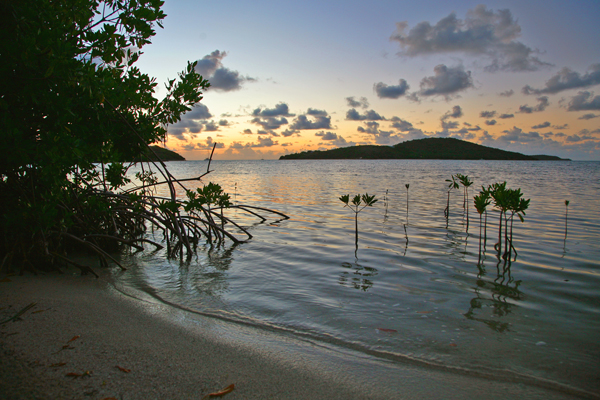 The flats alongside these mangroves below have slowly been getting mangroves covering it since the big hurricanes of the 90s.
The flats alongside these mangroves below have slowly been getting mangroves covering it since the big hurricanes of the 90s.
 The habitat in many cases can grow if allowed. It isn't aways easy though as Mr. Alan Stanford discovered at Maiden Island. His development company cleared much of the mangroves there when they first started their project as you will see if you read this article. Afterwards he hired people to replant the mangroves as you will see in this article. Since the report above was written, all of these plants died showing that it isn't always easy to replicate mother nature.
The habitat in many cases can grow if allowed. It isn't aways easy though as Mr. Alan Stanford discovered at Maiden Island. His development company cleared much of the mangroves there when they first started their project as you will see if you read this article. Afterwards he hired people to replant the mangroves as you will see in this article. Since the report above was written, all of these plants died showing that it isn't always easy to replicate mother nature.


 If you are interested in seeing how it all comes together then i suggest going to a bit of the coastline that has mangrove or taking an eco tour. Its not all great news though and the fight to protect the mangrove eco system will continue. I hope that the fisheries department will be convinced by the DCA and Environment division that the use of gill nets in and around the mangrove system killing the wildlife that is supported there is almost as bad as cutting them down. These photos were taken today:
If you are interested in seeing how it all comes together then i suggest going to a bit of the coastline that has mangrove or taking an eco tour. Its not all great news though and the fight to protect the mangrove eco system will continue. I hope that the fisheries department will be convinced by the DCA and Environment division that the use of gill nets in and around the mangrove system killing the wildlife that is supported there is almost as bad as cutting them down. These photos were taken today: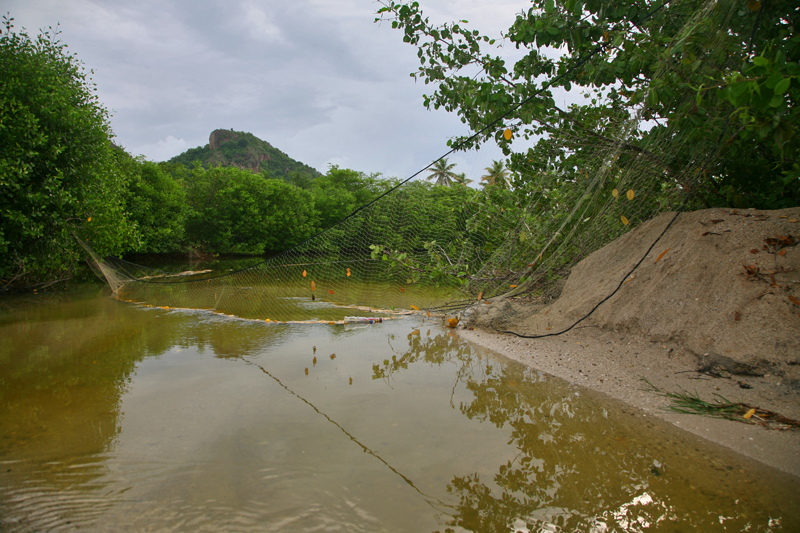


 The flats alongside these mangroves below have slowly been getting mangroves covering it since the big hurricanes of the 90s.
The flats alongside these mangroves below have slowly been getting mangroves covering it since the big hurricanes of the 90s.  The habitat in many cases can grow if allowed. It isn't aways easy though as Mr. Alan Stanford discovered at Maiden Island. His development company cleared much of the mangroves there when they first started their project as you will see if you read this article. Afterwards he hired people to replant the mangroves as you will see in this article. Since the report above was written, all of these plants died showing that it isn't always easy to replicate mother nature.
The habitat in many cases can grow if allowed. It isn't aways easy though as Mr. Alan Stanford discovered at Maiden Island. His development company cleared much of the mangroves there when they first started their project as you will see if you read this article. Afterwards he hired people to replant the mangroves as you will see in this article. Since the report above was written, all of these plants died showing that it isn't always easy to replicate mother nature.
1 comment:
i am a university student.i was very happy for this page.because i am fallowing Aquatic resources & technology
Post a Comment